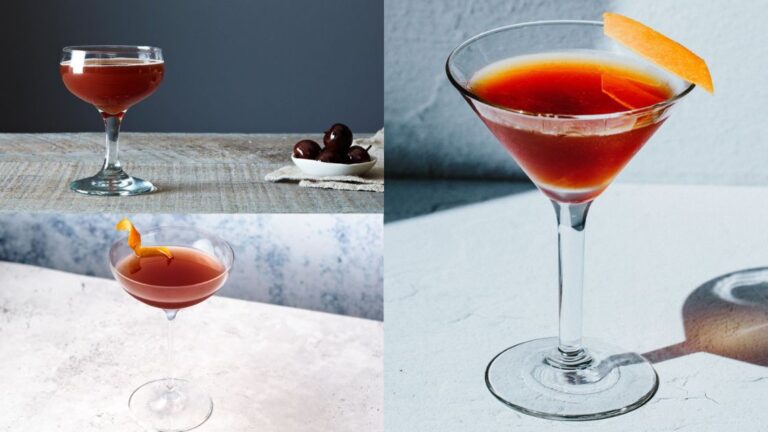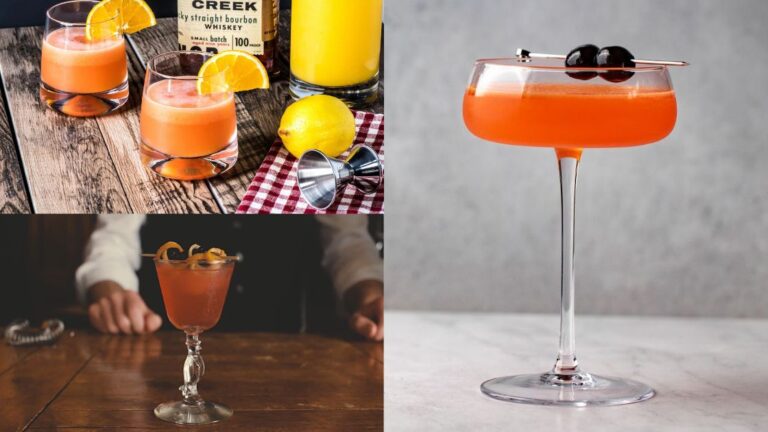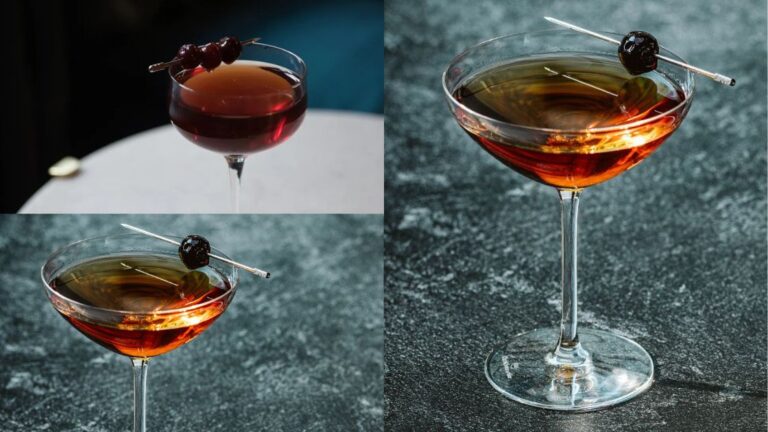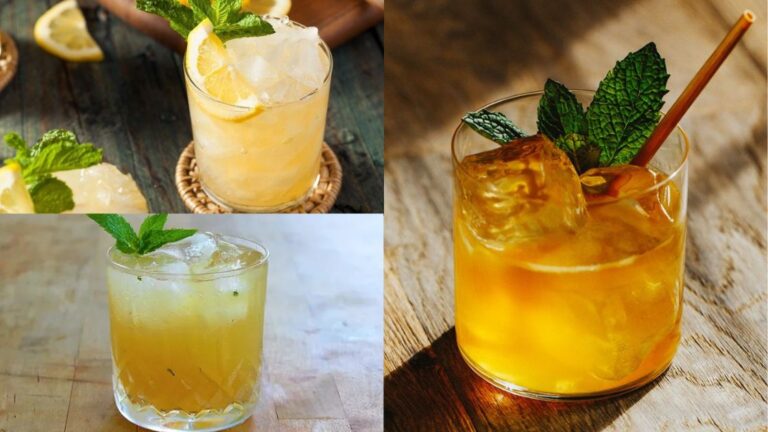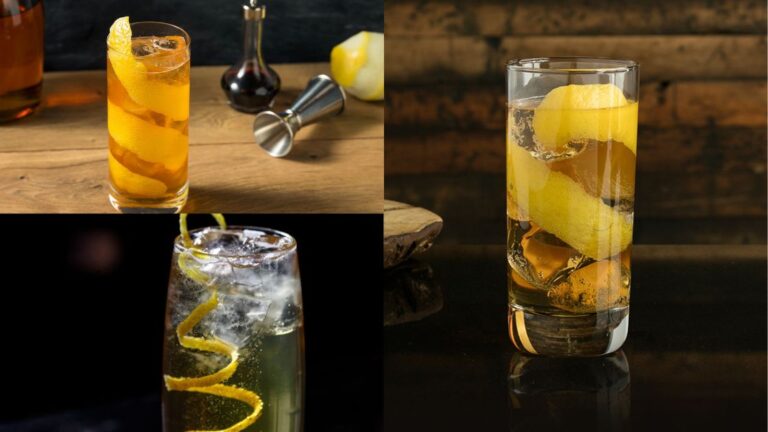Irish whiskey is recognized for its unique flavors and production methods. Irish whiskey holds a deep-rooted history dating back to the 12th century. It was during this time that distillation techniques, originally used for perfume-making, were repurposed for the creation of alcoholic beverages. Irish monks, having learned these methods while on their travels, were the first to bring this new craft to Ireland. The word “whiskey,” originating from the Irish word “uisce beatha” or “water of life,” emphasizes the cultural significance of this drink. Over the centuries, despite periods of booming prosperity and crippling setbacks such as the Prohibition era in the United States and the Anglo-Irish trade war, Irish whiskey has managed to preserve its legacy, growing stronger and more globally influential.
Today, Irish whiskey stands tall among the world’s most esteemed spirits. With its unique flavor profiles and unrivaled smoothness, it is celebrated globally, appealing to both whiskey connoisseurs and novices alike. Not only has it been a long-standing ambassador of Irish culture, but it has also significantly impacted the global spirits market. From America to Japan, Irish whiskey has carved out its niche, influencing and inspiring whiskey traditions worldwide.
This article aims to explore the many aspects that define Irish whiskey. From the legal specifications and distillation processes that distinguish it, to its various types, unique flavor profiles, and the prominent distilleries that produce it, we will delve into what truly makes Irish whiskey stand out in the global spirits industry. Additionally, we will examine the role of Irish whiskey in the global spirits trade and look forward to its future prospects. Through this comprehensive exploration, we hope to deepen the reader’s understanding and appreciation of this distinguished spirit.
The Legal Definition of Irish Whiskey
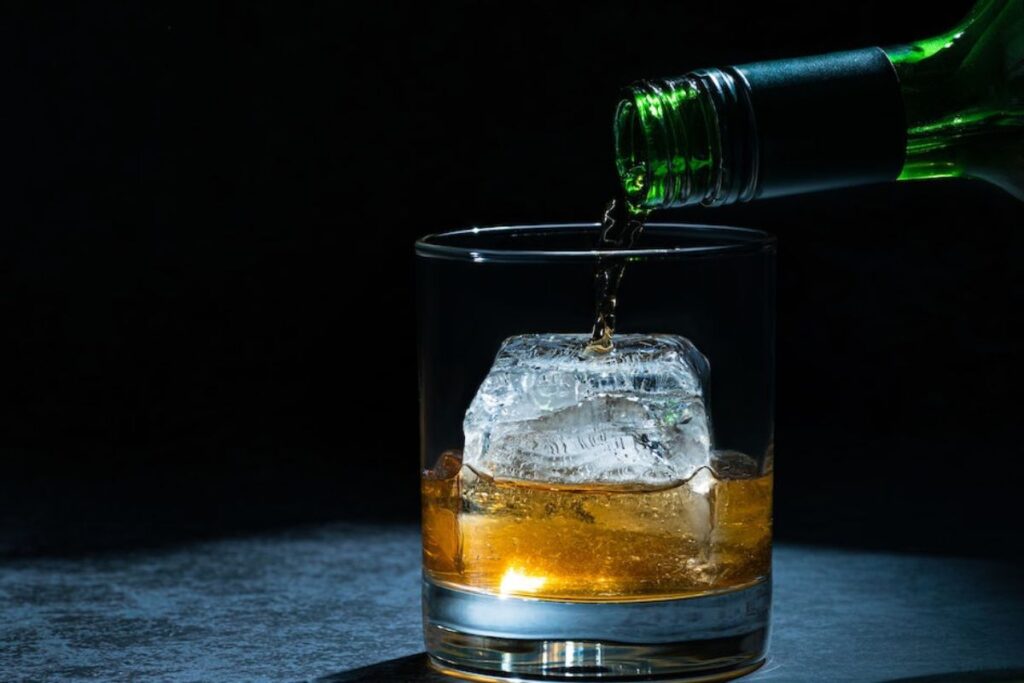
The Irish Whiskey Act of 1980 provides a legal framework for what can be labelled as Irish Whiskey. Under the Act, Irish Whiskey must be distilled and matured on the island of Ireland from a mash of malted cereals with or without whole grains of other cereals. The distillation must occur under 94.8% ABV, which allows the spirit to retain the flavors of the grains and fermentation. Importantly, maturation must be in wooden casks for a minimum of three years. This legislation safeguards the integrity and reputation of Irish Whiskey, ensuring the quality and authenticity of the spirit.
In addition to national laws, Irish whiskey is also protected at the European level under Geographic Indication (GI) status. This designation means that Irish whiskey must be produced in Ireland according to specific production methods. Essentially, just like Champagne has to come from the Champagne region of France, Irish whiskey must come from Ireland. This status, granted in 2008, gives further weight to the protection of Irish Whiskey, maintaining its tradition, and preventing the misuse of the term outside Ireland.
Irish whiskey also enjoys protection and recognition at an international level. As a result of numerous bilateral agreements, such as the agreement between the European Union and the United States in 1994, Irish Whiskey is recognized as a protected term. This means that other countries cannot produce a product and call it “Irish Whiskey”. These protections, while safeguarding the reputation of Irish Whiskey, also ensure that consumers worldwide get a genuine product when they purchase a bottle labelled as Irish Whiskey.
The Distillation Process: Crafting Irish Whiskey
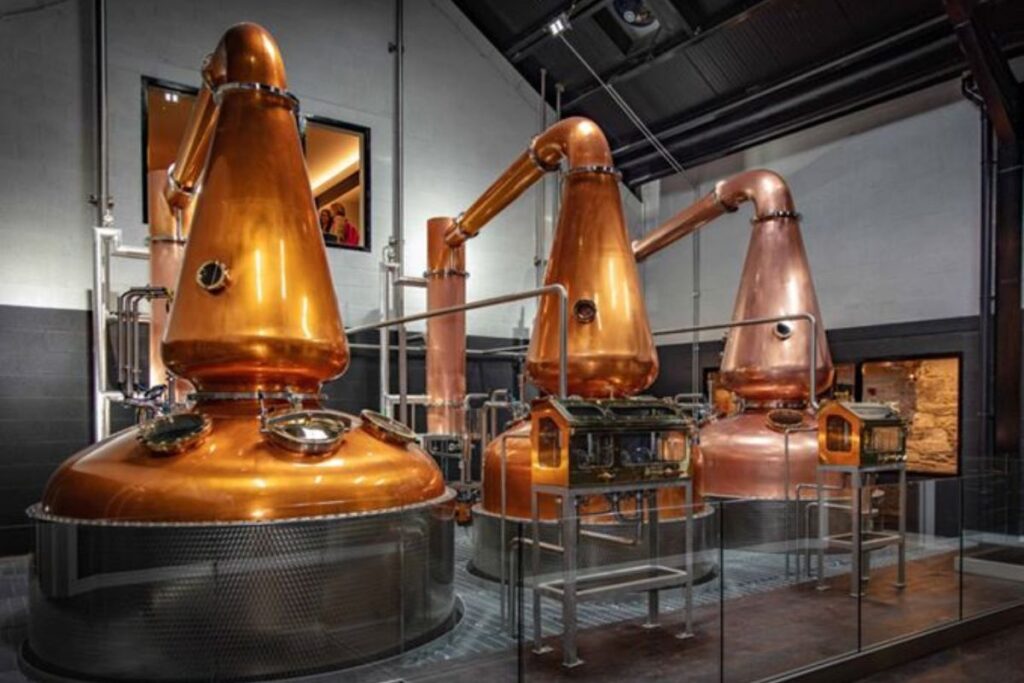
The Unique Triple Distillation Process
One of the signature elements that set Irish whiskey apart is the traditional triple distillation process. This method involves distilling the fermented mash three times, which results in a smoother and higher alcohol content spirit. Each distillation stage progressively removes impurities and refines the flavors, leading to a final product that’s characteristically light, smooth, and robust.
Types of Stills Used in Ireland
Irish whiskey is typically produced using two kinds of stills: pot stills and column stills. Pot stills, traditional and iconic in shape, are often used in the production of single malt and single pot still whiskeys. They deliver a full-bodied and rich spirit. Column stills, on the other hand, are primarily employed in the production of grain whiskey. They result in a lighter and more neutral spirit. The use of these two different types of stills, individually or in combination, contributes to the diversity of flavors and styles found within Irish whiskey.
Discussion on the Use of Malted and Unmalted Barley
The choice of grain significantly influences the flavor profile of the whiskey. In Ireland, both malted and unmalted barley are used in whiskey production. Malted barley, which is barley that’s been soaked in water and allowed to germinate, imparts a rich, toasty flavor to the whiskey. Unmalted barley, conversely, gives the whiskey a spicy or creamy character. The use of a mix of malted and unmalted barley, particularly in single pot still whiskeys, is a uniquely Irish approach and imparts a distinctive taste.
The Role of the Aging Process and the Use of Wooden Casks
Irish whiskey is aged in wooden casks for a minimum of three years, but many whiskeys mature for much longer. During this time, the spirit draws color, flavor, and aroma from the wood, resulting in a more complex and rounded whiskey. The type of wood used for the casks, most commonly American oak, Spanish sherry oak, and occasionally others like French oak or exotic woods, can significantly impact the whiskey’s flavor, contributing notes of vanilla, caramel, dried fruit, and more. The length of the maturation also plays a part; generally, the longer a whiskey ages, the more intense its flavor becomes. However, this process requires a delicate balance, as overly long aging can sometimes overpower the spirit’s subtleties.
Types of Irish Whiskey
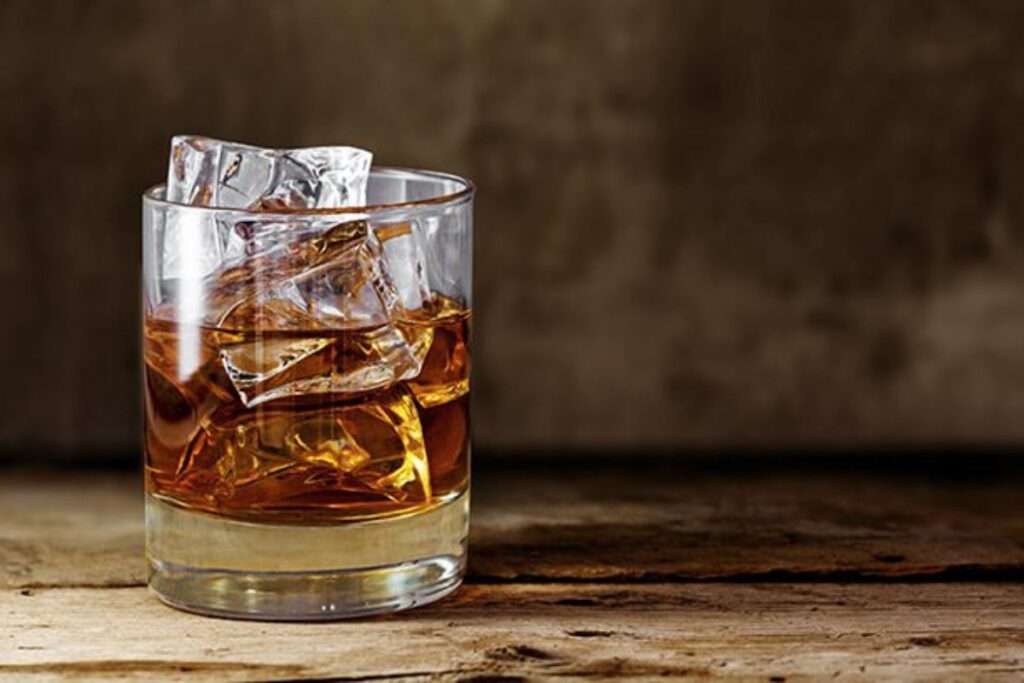
Single Malt Irish Whiskey
Single malt Irish whiskey is made from 100% malted barley and distilled entirely in a pot still within a single distillery. The result is a full-bodied, complex whiskey often characterized by rich, fruity notes, and a smooth finish. The flavor can vary depending on the length of maturation and type of casks used for aging.
Single Pot Still Irish Whiskey
Unique to Ireland, single pot still whiskey is made from a mix of malted and unmalted barley and distilled in a pot still within a single distillery. This combination results in a uniquely creamy and spicy whiskey with a full-bodied, complex character. Single pot still whiskey has seen a resurgence in popularity as consumers seek out distinct, traditional whiskey styles.
Grain Irish Whiskey
Grain Irish whiskey is made from a mixture of grains such as corn, wheat, and barley. It is typically distilled in column stills, resulting in a lighter, often sweeter spirit compared to single malt or single pot still whiskeys. Grain whiskey is commonly used in blends but can also be enjoyed on its own.
Blended Irish Whiskey
Blended Irish whiskey combines two or more types of whiskey (often grain whiskey and either single malt or single pot still whiskey) from different distilleries. The purpose of blending is to balance flavors and create a smooth, accessible spirit. Blended whiskeys constitute a significant part of the Irish whiskey market and are often the entry point for many whiskey drinkers.
Brief Comparison with Other Global Whiskies
Compared to Scotch whisky, which can be smoky and robust due to the use of peat in the malting process, Irish whiskey is typically smoother and lighter, largely because peat is rarely used in the production. American whiskeys, like Bourbon, tend to be sweeter and fuller-bodied due to the use of corn and new charred oak barrels for aging. Japanese whisky, on the other hand, is often delicate and complex, with a style that lies somewhere between Scotch and Irish whiskey. Each type of whiskey offers its own unique characteristics and appeals to different flavor preferences.
The Unique Flavor Profile of Irish Whiskey
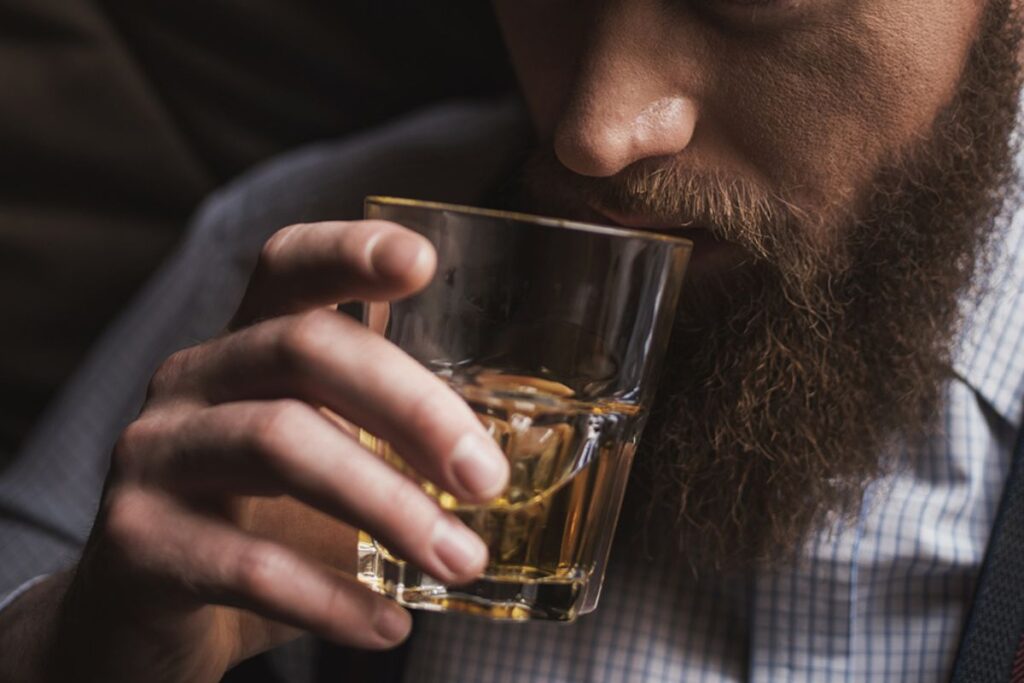
Common Flavors and Their Sources
The flavor profile of Irish whiskey is often described as smooth, light, and slightly sweet. Common flavors include notes of vanilla and honey, resulting from the use of ex-bourbon American oak casks for maturation. Fruitier notes such as apple, pear, and citrus can come from the fermentation process and type of yeast used. The use of sherry casks can impart richer, dried fruit and nutty flavors. Whiskeys made with unmalted barley in the mix often have a spicy or creamy character. Each distillery will have its own specific flavor profile, depending on its choice of ingredients, distillation methods, and aging process.
The Influence of Terroir on Flavor
Terroir, a French term meaning “sense of place,” refers to how a particular region’s climate, soils, and aspect (terrain) affect the taste of the whiskey. In Ireland, the mild climate and rich, fertile soils contribute to the flavor of the grains used in distillation. For example, barley grown in coastal areas might lend a slight salinity to the whiskey. The quality of the water used in the mashing and dilution processes also plays a significant role in the final product, adding another layer of regional character to the whiskey.
How Aging Impacts Flavor Development
Aging plays a critical role in the flavor development of Irish whiskey. As the spirit ages in wooden casks, it absorbs compounds from the wood that impart a range of flavors and aromas, from sweet and caramel-like to spicy or oaky. The type of wood, previous use of the cask, and length of aging all contribute to the flavor profile. Moreover, during maturation, a small amount of whiskey evaporates through the cask, known as the “Angel’s Share.” This process can influence the whiskey’s taste and aroma by concentrating flavors and introducing ambient qualities from the aging environment. The art of aging whiskey is a delicate balancing act – a whiskey aged for too long might become overly oaky or lose its distinctive grain flavors, while one that is not aged long enough might lack depth and complexity.
Exploring Noteworthy Irish Distilleries
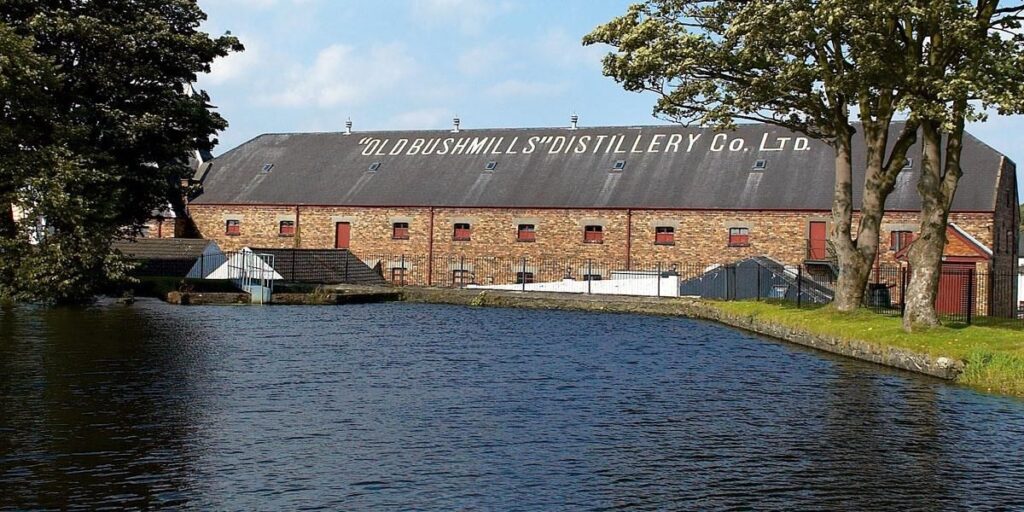
Overview of Some of the Oldest Distilleries in Ireland
Old Bushmills Distillery: Nestled in Northern Ireland, the Old Bushmills Distillery holds the license issued in 1608, making it one of the oldest distilleries in the world. It is renowned for its single malt whiskeys.
Jameson Distillery: Founded in Dublin in 1780 by John Jameson, Jameson’s Midleton Distillery in County Cork now serves as the brand’s primary production site. Known for its blended whiskeys, Jameson has been instrumental in popularizing Irish whiskey worldwide.
Powers Distillery: Established in 1791 in Dublin, Powers has been a significant player in the Irish whiskey scene. Today, the brand continues its legacy at the Midleton Distillery, known for producing smooth, pot still whiskeys.
Highlighting Innovative Contemporary Distilleries
Teeling Whiskey: This Dublin-based distillery, operational since 2015, represents a renaissance of distilling in Dublin. With a focus on unique maturation techniques, such as aging whiskey in rum barrels, Teeling is pushing the boundaries of Irish whiskey.
Dingle Distillery: Founded in 2012 in County Kerry, Dingle Distillery crafts artisanal whiskey, with each batch unique. It emphasizes a farm-to-bottle approach, showcasing the influence of Irish terroir on whiskey.
How Individual Distilleries Contribute to the Diversity of Irish Whiskey
Each distillery in Ireland, with its unique production methods, ingredients, and maturation techniques, contributes to the diversity of Irish whiskey. For instance, while Old Bushmills is known for its smooth single malts, Jameson showcases the excellence of blended whiskey. Contemporary distilleries like Teeling and Dingle, with their innovative practices, add further depth and breadth to the category.
Whether it’s through the use of different grains, employing pot or column stills, or experimenting with various cask finishes, these distilleries create a range of flavor profiles catering to varied consumer preferences. This diversity, coupled with the shared commitment to quality and authenticity, underpins the global appreciation for Irish whiskey.
The Role of Irish Whiskey in Global Spirits Trade
As of my knowledge cutoff in 2021, Irish whiskey has been enjoying a robust growth in exports, making it one of the fastest-growing spirits in the world. This section would delve into up-to-date figures and statistics regarding the export volumes and primary markets for Irish whiskey. Key markets traditionally include the United States, Canada, and parts of Europe. However, emerging markets in Asia and Africa also contribute to the increasing global demand.
This part will provide a comparative analysis of Irish whiskey’s market share vis-a-vis other globally acclaimed whiskies like Scotch, American bourbon, or Japanese whisky. As of 2021, despite the rapid growth, Irish whiskey’s market share was relatively small compared to Scotch whisky. However, it has been steadily catching up, driven by increasing consumer appreciation for its unique flavor profile and high-quality offerings. The specifics would require up-to-date data.
The Future of Irish Whiskey
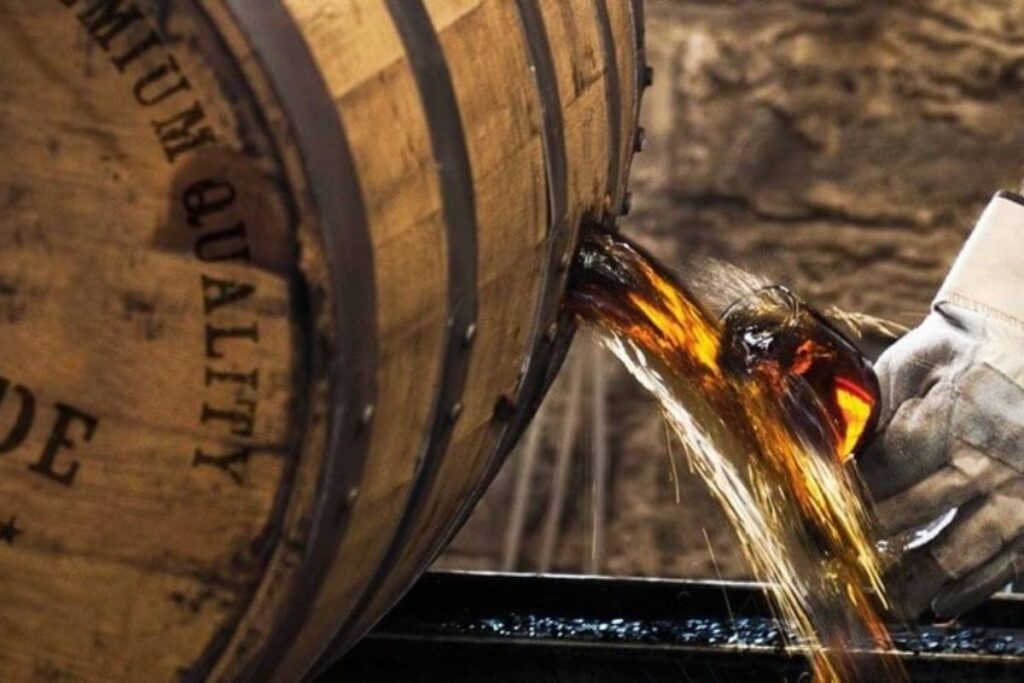
Current Trends in Irish Whiskey Production and Consumption
- Revival of Old Styles: As consumers become more knowledgeable, there’s been a resurgence in interest in traditional styles, such as single pot still whiskey, that are uniquely Irish. This trend drives exploration and diversification in the market.
- Innovation and Experimentation: Distilleries are experimenting with different grains, yeasts, maturation techniques, and finishes, leading to novel expressions of Irish whiskey. Some distilleries are exploring organic or locally-sourced grains, while others experiment with cask finishes using barrels that previously held other spirits or wines.
- Sustainability: As with many industries, sustainability is becoming increasingly important in whiskey production. From grain sourcing and water use to energy efficiency and waste management, distilleries are looking to reduce their environmental footprint.
Predictions and Challenges for the Future
- Continued Growth: Given its current trajectory, the future for Irish whiskey appears bright. It’s anticipated that growth will continue, fueled by increased global demand, particularly in emerging markets.
- Premiumization: As consumers continue to develop an appreciation for higher quality spirits, there’s likely to be a shift towards more premium offerings. This means we can expect to see more aged statements, single malts, and pot still expressions.
- Challenges: Despite the positive outlook, challenges remain. These include ensuring consistency of quality, managing the effects of climate change on production, navigating global trade policies, and meeting the rising demand without compromising the distinct character that defines Irish whiskey.
Conclusion
In conclusion, we would revisit the defining aspects of Irish whiskey – its legal definition, unique production methods, diverse types, the importance of maturation, the distinct flavor profile, and the role of the various distilleries. Each of these factors contributes to making Irish whiskey a beloved spirit worldwide.
We would end the article by encouraging readers to explore the world of Irish whiskey further, either by visiting distilleries, attending tastings, or simply trying a new bottle. With the myriad of styles available, from smooth blends to complex single malts and robust single pot still expressions, there’s an Irish whiskey for every palate. Despite its growing popularity, Irish whiskey remains an underexplored category, offering an exciting journey of discovery for spirits enthusiasts and casual drinkers alike. The continued growth and innovation within the sector indicate that the future of Irish whiskey is as exciting as its storied past.

